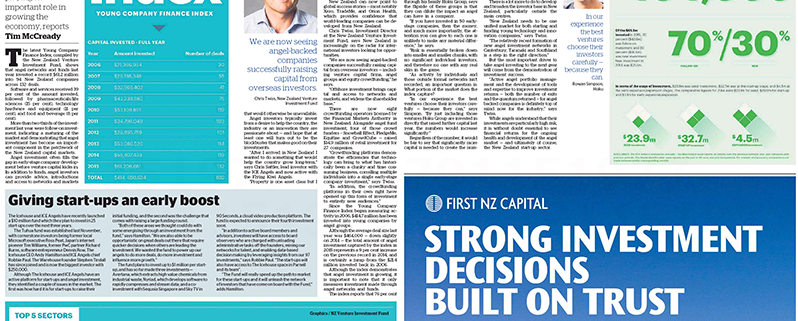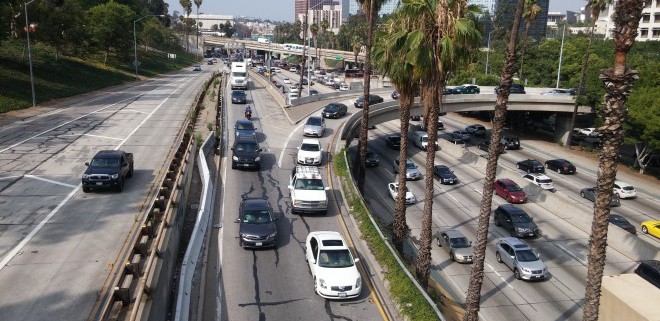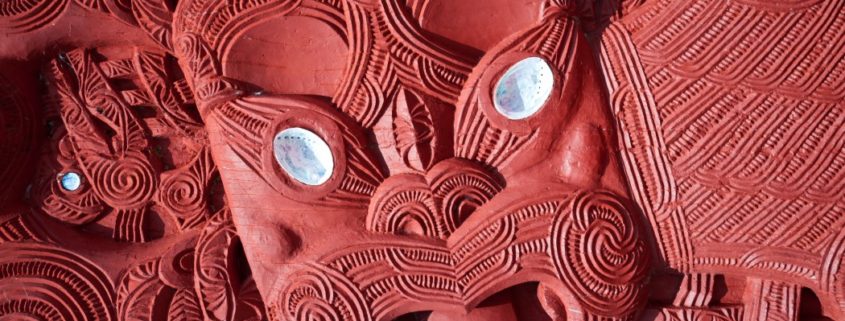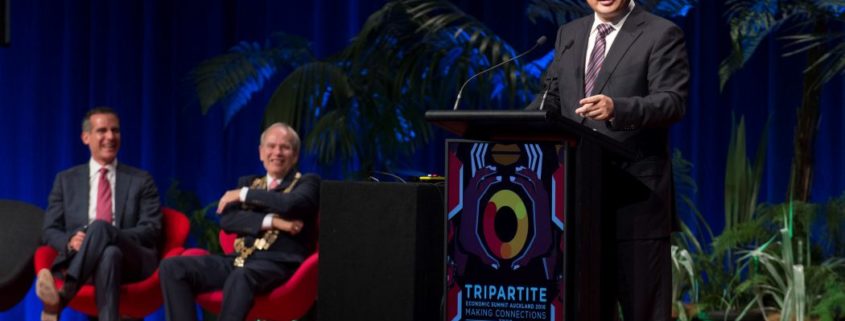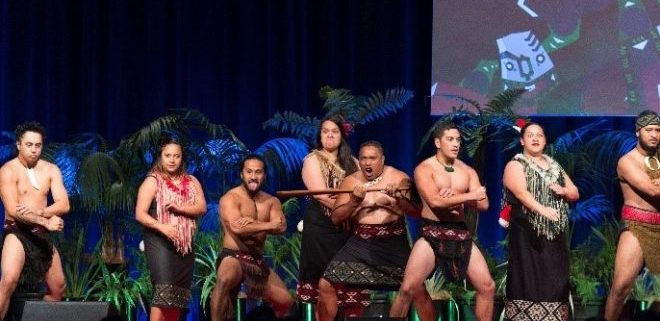http://nzh.tw/11640197
The angel investment market in New Zealand is maturing and playing an important role in growing the economy, reports Tim McCready
The latest Young Company Finance Index, compiled by the New Zealand Venture Investment Fund, shows that angel networks and funds last year invested a record $61.2 million into 94 New Zealand companies across 132 deals.
Software and services received 39 per cent of the amount invested, followed by pharmaceuticals/life sciences (15 per cent), technology hardware and equipment (11 per cent), and food and beverage (8 per cent).
More than two-thirds of the investment last year were follow-on investment, indicating a maturing of the market and demonstrating that angel investment has become an important component in the patchwork of the New Zealand capital markets.
Angel investment often fills the gap in early-stage company development before venture capital kicks in. In addition to funds, angel investors can provide advice, introductions and access to networks and markets that would otherwise be unavailable.
Angel investors typically invest from a desire to help the country, the industry or an innovation they are passionate about — and hope that at least one will turn out to be the blockbuster that makes good on their investments.
“After I arrived in New Zealand I wanted to do something that would help the country grow long-term,” says Chris Sattler, lead investor with the ICE Angels and now active with the Flying Kiwi Angels.
“Property is one asset class but I strongly believe in investing in ‘more productive’ assets to provide interesting and high-value jobs for the future,” he says.
“Angel investment is a driven environment and it’s energising to work with the founders.
“Plus, it’s a great way to build a network of interesting, like-minded people.”
New Zealand can now point to global success stories — most notably Xero, Trade Me, and Orion Health, which provides confidence that world-leading companies can be developed from New Zealand.
Chris Twiss, Investment Director at the New Zealand Venture Investment Fund, says New Zealand is increasingly on the radar for international investors looking for opportunities.
“We are now seeing angel-backed companies successfully raising capital from overseas investors — including venture capital firms, angel groups and equity crowdfunding,” he says.
“Offshore investment brings capital and access to networks and markets, and widens the shareholder base.”
There are now eight crowdfunding operators licensed by the Financial Markets Authority in New Zealand. Alongside angel fund investment, four of those crowd funders Snowball Effect, PledgeMe, Equitise and CrowdCube — raised $14.9 million of retail investment for 27 companies.
“Crowdfunding platforms demonstrate the efficiencies that technology can bring to what has historically been a clunky and time consuming business, corralling multiple individuals into a single early-stage company investment,” says Twiss.
“In addition, the crowdfunding platforms in their own right have opened up this form of investment to entirely new audiences.”
Since the Young Company Finance Index began measuring activity in 2006, $414.7 million has been invested into young companies by angel groups.
Although the average deal size last year was $464,000 — down slightly on 2014 — the total amount of angel investment captured by the index in 2015 represents a 9 per cent increase on the previous record in 2014, and is certainly a jump from the $21.4 million invested back in 2006.
Although the index demonstrates that angel investment is growing, it is important to note that it only measures investment made through angel networks and funds.
The index reports that 76 per cent of deals last year were syndicated across angel groups.
These networks help shortcut the investment process, by linking start-ups with investors and providing access to deals, shared research and pooled investment capital.
Rowan Simpson, who was the third employee at Trade Me and is now a seasoned advisor and investor through his family office Hoku Group, says the flipside of these groups is that they can dilute the impact an angel can have in a company.
“If you have invested in 50 early-stage companies then the money, and much more importantly, the attention you can give to each one is unlikely to make any material difference,” he says.
“Risk is essentially broken down into smaller and smaller chunks, with no significant individual investors, and therefore no one with any real skin in the game.
“As activity by individuals and those outside formal networks isn’t recorded, an important question is: What portion of the market does the index capture?
“In our experience the best ventures choose their investors carefully — because they can,” says Simpson. “By just including those ventures Hoku Group are invested in directly that raised further capital last year, the numbers would increase significantly.”
Regardless of the number, it would be fair to say that significantly more capital is needed to create the number of globally-competitive businesses New Zealand so desperately needs. Investment figures have doubled in the eight years since 2007, but New Zealand only invests around $13 per capita through angel investment. Compare this to the United States, where some estimates of angel investment are north of US$70 per capita.
There is a lot more to do to develop and broaden the investor base in New Zealand, particularly outside the main centres.
“New Zealand needs to be one unified market for both starting and funding young technology and innovation companies,” says Twiss.
“The relatively recent formation of new angel investment networks in Canterbury, Taranaki and Southland is a step in the right direction.”
But the most important driver to take angel investing to the next gear will come from the demonstration of investment success.
“Active angel portfolio management and the development of tools and expertise to improve investment returns — both the number of exits and the quantum returned — for angel backed companies is definitely top of mind now for the industry,” says Twiss.
While angels understand that their investments are particularly high risk, it is without doubt essential to see financial returns for the ongoing health and development of the angel market — and ultimately of course, the New Zealand start-up sector.

